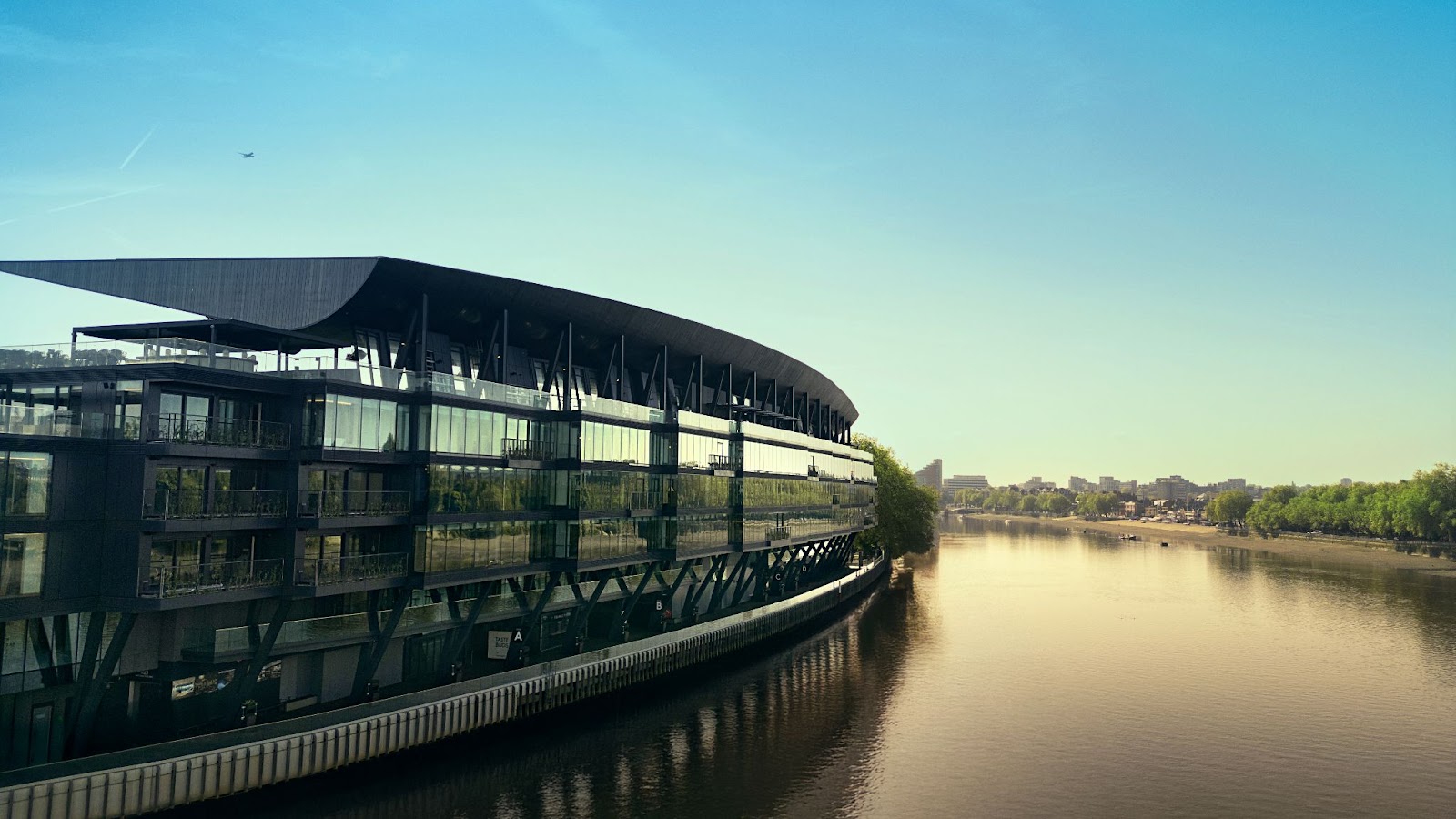Weathered steel louvres screen a hidden house in Hackney by Guttfield Architecture
Hackney Backhouse in east London addresses the street through a screen of weathering steel, detailed to afford passers-by a glimpse of the inner sanctum. Designed by Guttfield Architecture, the two-storey, three-bedroom family home is tucked into a site just 11 by 8 metres site, formerly occupied by a run-down garage and workshop. Keen to integrate the house in its the conservation area neighbourhood, the architects sought to make the house part of the street and the street part of the house, and the screen of vertical Corten louvres serves to moderate this two-way relationship while ensuring privacy is maintained where needed.
The louvres have a kinked profile which, together with their spacing and orientation, is designed to allow views in and out of the house – pedestrians can peek in, whereas drivers of cars and bikes travelling at a higher speed will struggle to glimpse anything. The louvres are angled away from the nearest houses across the street, avoiding a direct line-of-sight, whereas the main living spaces enjoy a framed backdrop of passers-by, weather conditions and neighbouring buildings.
Beyond the screens, a glass front door and floor-to-ceiling glazing in the upper, ground-level living areas enhance the visual connections between the external materials of brick and Corten and the restrained, mostly white interior surfaces. During the day the south-facing screens cast shadows onto the walls of the living spaces, and at night the lit interiors enliven the streetscape. Eschewing curtains and blinds, the lightwells are integrated to make the plan feel more spacious than its dimensions. The ground floor is largely open-plan with areas for living, dining, cooking and entering. Seamlessly detailed rooflights featuring concealed lighting are positioned in the corners of the plan farthest from the screens, bringing additional light deep into the plan. The basement level, which houses three bedrooms and two bathrooms, is arranged around the two secluded courtyards, which introduce daylight and provide external amenity and cycle storage.
The palette comprises ochre brickwork, anodised aluminium windows, weathering steel, concrete floor tiles and both oak and white joinery, together with tactile fittings such as handles picked out in brass. A lightweight suspended white steel staircase features inset concrete tile treads and a solid brass handrail. A white steel ship’s stair provides a means of escape from the larger lightwell in the event of fire. Sustainability measures include photovoltaic solar panels, super-insulation, triple glazing and underfloor heating, while a sedum green roof reduces water run-off.
A historic planning consent for the site was for a design that turned its back on the street, hiding behind a wall and receiving light only from rooflights and internal courtyards – an approach that the architects felt was too introverted. “The strict £500,000 budget was a real challenge, especially as we were building to the full extent of the site, up against neighbouring buildings and the road, and given that basement construction is inherently more complicated and expensive”, says Fred Guttfield. “The budget could have easily restricted some of the more interesting elements of the scheme, but we developed a three-step strategy to ensure it was met. Firstly, we developed extremely detailed construction drawings to ensure that everything was fully described and nothing changed during construction. Secondly, we collaborated with the contractor, Talina Builders, and selected subcontractors such as Metalworks Telford, who we had worked with extensively before, and where there was a real sense of teamwork and trust. Thirdly, we chose not to unnecessarily burden the contractor or subcontractors with design liabilities, which would ultimately drive up the cost. The strategy worked well and we were able to complete the house, which has a gross internal area of 112 square metres, within the budget.”




































